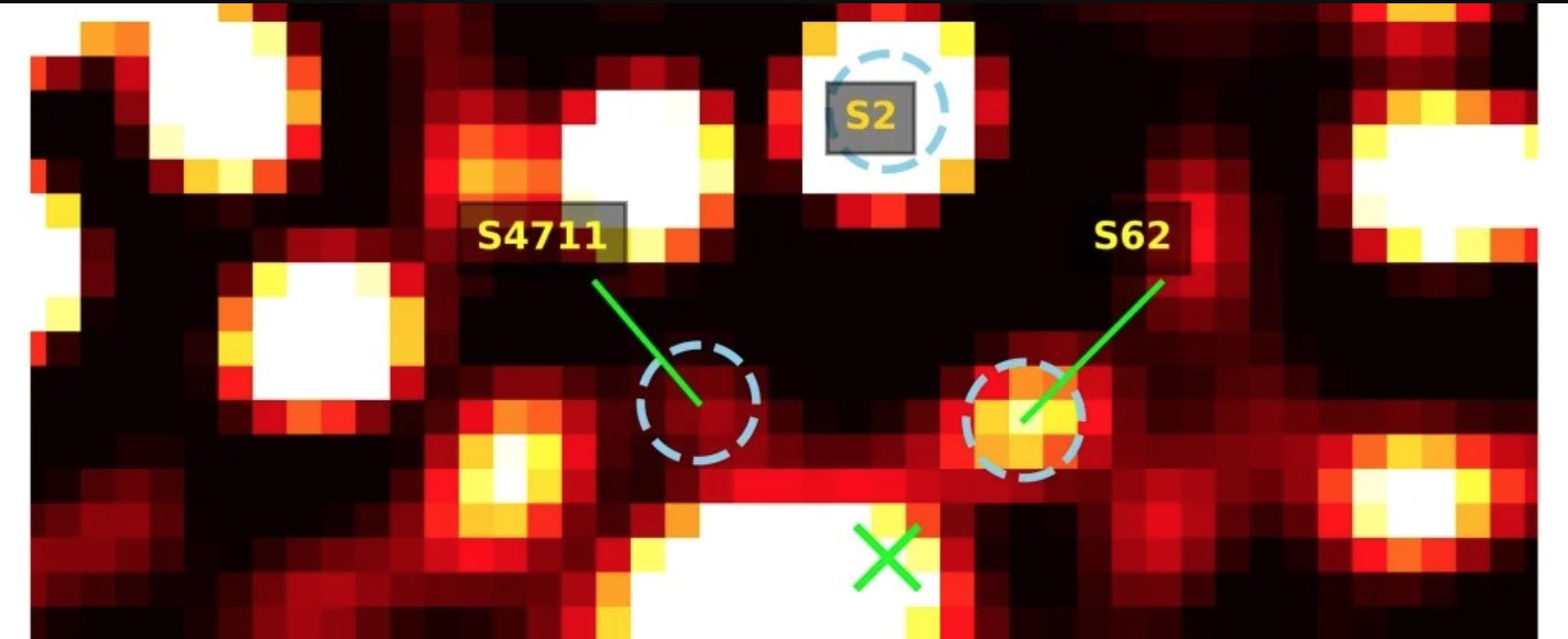The fastest star ever seen is moving at 8% the speed of light
It's whipping around the Milky Way's monster black hole

In the center of our Milky Way galaxy, scientists have spotted the fastest star ever detected, moving at more than 8% of the speed of light.
Our galaxy's center features the supermassive black hole Sagittarius A* (Sgr A*), which is as massive as about 4 million suns. Being so massive, it has hundreds of stars pulled closely into its orbit, traveling extra-fast from the gravitational boost presented by this close proximity. In a new study, scientists discovered the fastest of these stars, S4714, which orbits around Sgr A* at more than 8% of light speed, or 15,000 miles per second (24,000 km/second), faster than any other known star.
Another star orbiting close to Sgr A*, called S2, was once thought for to be the fastest star. But last year, a new speedy contender, the star S62, was detected by a team led by astrophysicist Florian Peissker of the University of Cologne in Germany. At the time, S62was said to be the closest star orbiting Sgr A*, speeding around the black hole. Now, the same team has discovered five new "S stars," or stars which travel in long, elliptical orbits around Sgr A*, that are even closer — S4711, S4712, S4713, S4714 and S4715.
Video: How the Milky Way's Black Hole Ejected Runaway Star
Related: The biggeststar mysteries of all time
The team has been studying our galaxy's center and the ultra-fast stars orbiting its supermassive black hole using the ESO's Very Large Telescope in Chile for the past seven years. They have also used near-infrared data from SINFONI (Spectrograph for INtegral Field Observations in the Near Infrared).
"I am constantly working on the galactic center and I am pretty sure that this was not our last publication," Peissker told ScienceAlert. "The high dynamical environment is for scientists like a candy-shop for children..
Get the Space.com Newsletter
Breaking space news, the latest updates on rocket launches, skywatching events and more!
This discovery doesn't just highlight S4714 and its incredible speeds, it also gives scientist a window into studying a theorized type of star known as "squeezars" that orbits so close to black holes that they are "squeezed" by the black hole's tidal forces. Theresearch also suggests that there could be even more of these ultra-fast stars zipping around supermassive black holes like this, scientists said.
This work was published Aug. 11 in the Astrophysical Journal.
Email Chelsea Gohd at cgohd@space.com or follow her on Twitter @chelsea_gohd. Follow us on Twitter @Spacedotcom and on Facebook.
Join our Space Forums to keep talking space on the latest missions, night sky and more! And if you have a news tip, correction or comment, let us know at: community@space.com.

Chelsea “Foxanne” Gohd joined Space.com in 2018 and is now a Senior Writer, writing about everything from climate change to planetary science and human spaceflight in both articles and on-camera in videos. With a degree in Public Health and biological sciences, Chelsea has written and worked for institutions including the American Museum of Natural History, Scientific American, Discover Magazine Blog, Astronomy Magazine and Live Science. When not writing, editing or filming something space-y, Chelsea "Foxanne" Gohd is writing music and performing as Foxanne, even launching a song to space in 2021 with Inspiration4. You can follow her on Twitter @chelsea_gohd and @foxannemusic.
-
Lovethrust They don’t mention this in the article but that star is going so fast that for every year on that star 1 year and 28 hours passes on Earth! That star has also gained noticeable mass traveling so fast.So that would have to be taken into account when calculating it’s mass as well.Reply
Shades of “Miller’s Planet”! -
rod Very good here on the article, shorter but sweet :) There are 7 stars documented now moving rapidly around Sgr A*, the SMBH at the center of the Milky Way. These stars estimated masses range 2.0 to 6.1 solar masses for the fastest star in the group. That is an enormous amount of kinetic energy in the stars motion.Reply
'The fastest star ever observed', https://phys.org/news/2020-08-fastest-star-1.html also 'S62 and S4711: Indications of a population of faint fast moving stars inside the S2 orbit -- S4711 on a 7.6 year orbit around Sgr~A*', https://arxiv.org/abs/2008.04764
My observation. The arXiv PDF is attached. Angular resolution 20 mas at 8000 pc distance = 160 AU, 120 mas = 960 AU. This fits well with Table 3 orbital parameters shown, e.g. pericenter distance (in AU), its apocentre distance (in AU). "ABSTRACT We present high-pass filtered NACO and SINFONI images of the newly discovered stars S4711-S4715 between 2004 and 2016. Our deep H+K-band (SINFONI) and K-band (NACO) data shows the S-cluster star S4711 on a highly eccentric trajectory around Sgr A* with an orbital period of 7.6 years and a periapse distance of 144 AU to the super massive black hole (SMBH). S4711 is hereby the star with the shortest orbital period and the smallest mean distance to the SMBH during its orbit to date...Table 3. Additional orbital and relativistic parameters for S62, S4711, S4712, S4713, S4714, S4715 stars in comparison with S2 star." My observation, Table 3. on page 7 shows the seven stars studied and orbital and velocity parameters. S62 is listed as the fastest, moving at 6.7% c or at least 20124 km/s. Table 2 (page 5) shows S62 estimated mass at 6.1 Msun. Other stars are 2.0 to 2.8 Msun.









